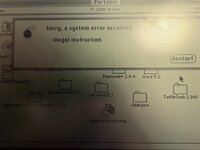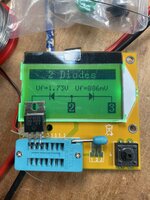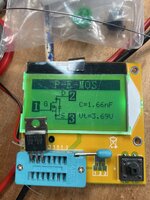Hi!
I have been looking through many threads regarding Macintosh Portable but unfortunately have not gotten any closer to a solution. Short story follows:
Macintosh Portable M5120 (non backlit) with original power brick 1MB RAM. (white/light grey).
Recapped about a year ago working fine back then.
Built a battery using 6v/4,5Ah lead-acid sealed battery with 3D printed case.
Bluescsi with Macintosh Plus .ini file in root of SD-card runnging Mac OS 6.0.8.
Is REALLY cranky when booting from battery, one in 10 tries boots all the way to Finder, then usually crashes within a few seconds.
-SAD MAC codes are as follows
Most Common:
00000010
0000CD37
and
00000000
0000CD38
00000014
0000CD38
I also get:
00000011
00100000
03001300
00001FFA
0000000F
00000001
If I manage to get into Finder booting of batter power only sometimes the mouse keyboard or both stop repsonding after a few seconds
Booting with power brick and battery works much better, usually boots into finder, getting random crashes and wierd error messages.
Suspecting Hybrid IC/board but seem a bit random, RAM? Any other chip?
Regards, Karl
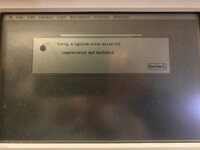
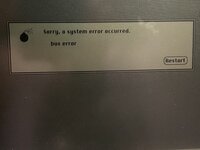
I have been looking through many threads regarding Macintosh Portable but unfortunately have not gotten any closer to a solution. Short story follows:
Macintosh Portable M5120 (non backlit) with original power brick 1MB RAM. (white/light grey).
Recapped about a year ago working fine back then.
Built a battery using 6v/4,5Ah lead-acid sealed battery with 3D printed case.
Bluescsi with Macintosh Plus .ini file in root of SD-card runnging Mac OS 6.0.8.
Is REALLY cranky when booting from battery, one in 10 tries boots all the way to Finder, then usually crashes within a few seconds.
-SAD MAC codes are as follows
Most Common:
00000010
0000CD37
and
00000000
0000CD38
00000014
0000CD38
I also get:
00000011
00100000
03001300
00001FFA
0000000F
00000001
If I manage to get into Finder booting of batter power only sometimes the mouse keyboard or both stop repsonding after a few seconds
Booting with power brick and battery works much better, usually boots into finder, getting random crashes and wierd error messages.
Suspecting Hybrid IC/board but seem a bit random, RAM? Any other chip?
Regards, Karl



